Traditional tomato farming in India offers farmers access to varieties that have been cultivated for generations. These desi tomato varieties provide superior taste, natural disease resistance, and adaptability to local growing conditions.
Unlike modern hybrids, traditional varieties maintain genetic diversity and offer farmers the ability to save seeds for future planting.
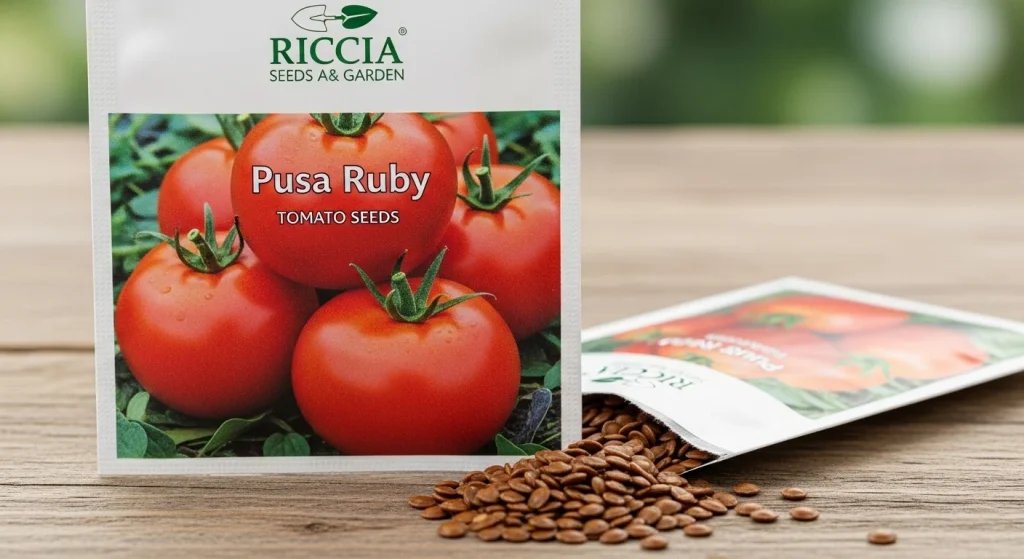
Understanding Desi vs Hybrid Tomatoes
Desi tomatoes are traditional, open-pollinated varieties that have been grown in India for decades. These varieties adapt naturally to local soil and climate conditions, making them ideal for farmers seeking sustainable cultivation practices.
Key Differences
| Aspect | Desi Varieties | Hybrid Varieties |
|---|---|---|
| Seed saving | Can save seeds | Cannot save seeds |
| Taste | Rich, complex flavor | Uniform, mild taste |
| Disease resistance | Natural tolerance | Engineered resistance |
| Cost | Lower input costs | Higher seed costs |
| Adaptability | Excellent local adaptation | Broad adaptation |
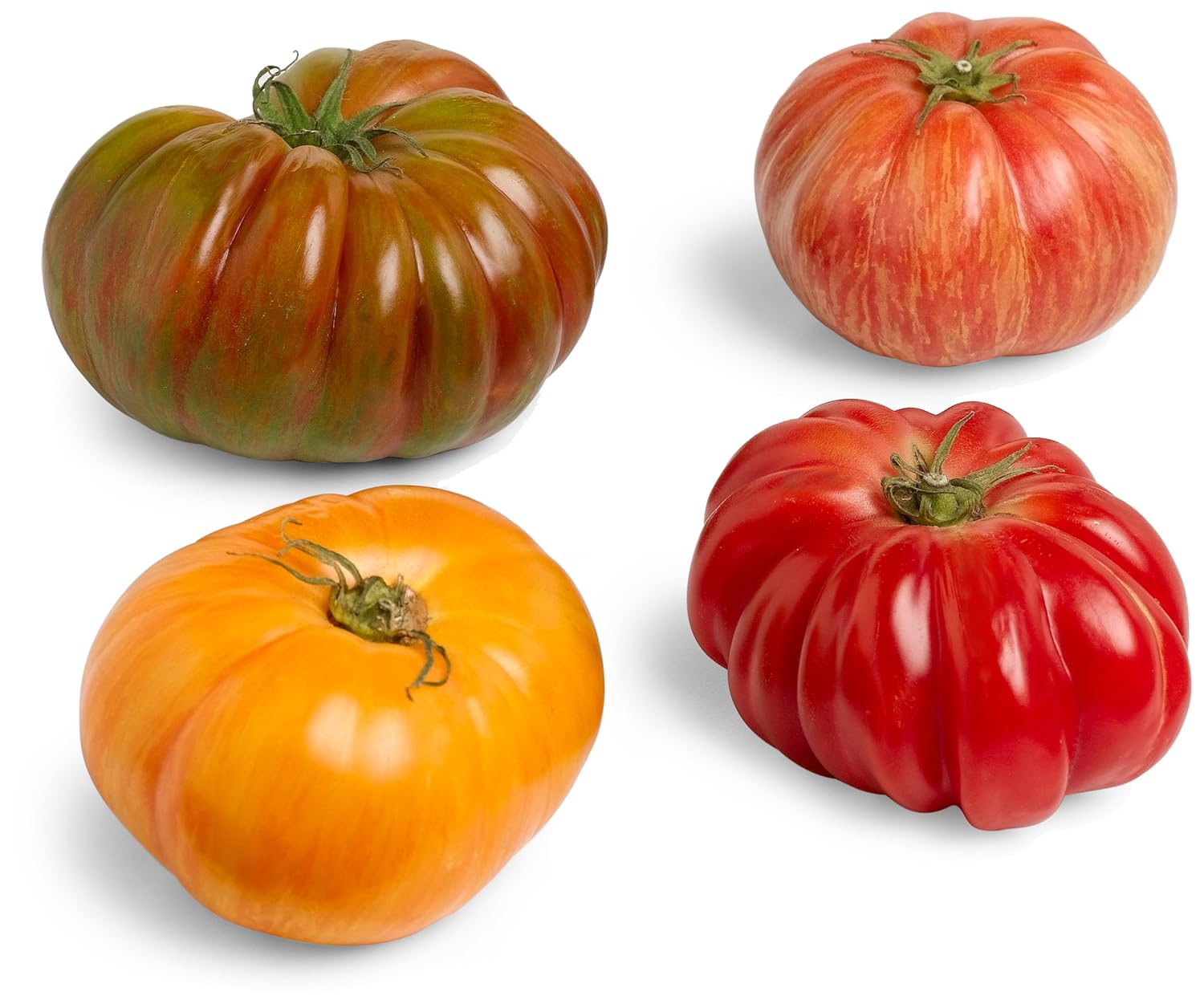
Major Desi Tomato Varieties by Region
North India Varieties
Pusa Ruby
Developed by IARI New Delhi, this early-growing variety produces medium-sized fruits with yellow stem ends and uniform ripening. Plants mature in 90–100 days and yield 32.5 tons per hectare. Suitable for both table consumption and processing.
Pusa Early Dwarf
This determinate variety from IARI matures in just 75–80 days after transplanting. Fruits are flattish-round with yellow stem ends, yielding 35 tons per hectare. Perfect for farmers wanting quick returns.
Also Read: How Many Tomatoes Will Grow in 1 Acre? Complete Plant & Yield Guide
Pusa 120
A heavy-yielding variety with nematode resistance. Fruits are medium-large with smooth skin and attractive appearance. Ideal for commercial cultivation in northern states.
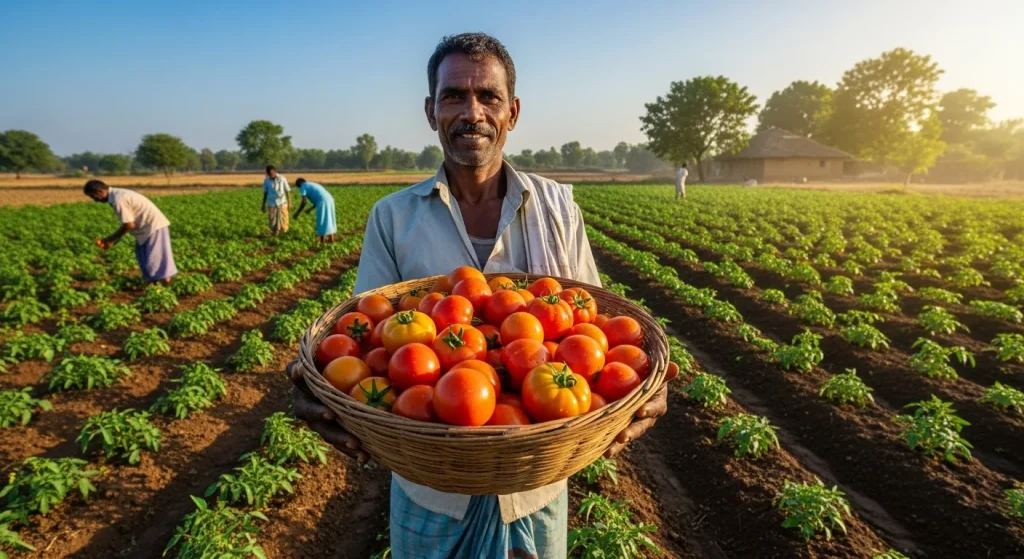
South India Varieties
Co 1 (Marutham)
Released by Tamil Nadu Agricultural University, this determinate variety produces round fruits with yellow stem ends. Specifically adapted for southern Indian growing conditions with uniform ripening characteristics.
Naati Tomato (Karnataka)
Traditional countryside variety with thin skin and exceptional flavor. Plants produce small to medium fruits (40-60g) with intense taste, preferred for local cuisine. Grows well in both container and field conditions.
Traditional Heirloom Varieties
Kashi Tomato
This indigenous variety produces ribbed, flattened fruits weighing 60–80 grams.

Known for traditional taste and cultural significance in Indian cooking. Matures in 85–95 days across multiple seasons.
Doyang Tomato
Unique northeastern variety with distinctive characteristics adapted to high rainfall regions. Produces 50-70 gram fruits with excellent local market demand.
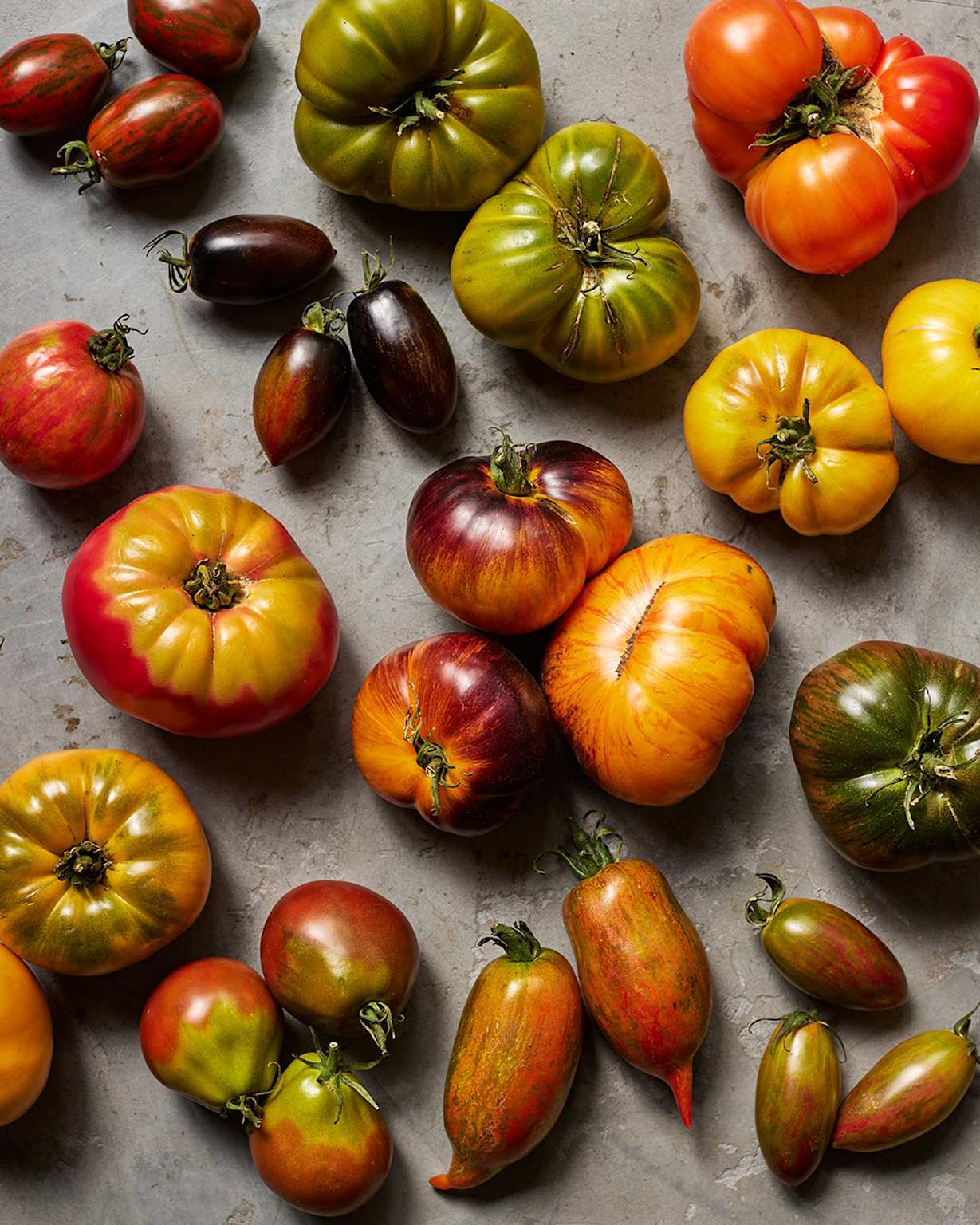
Disease Resistance in Desi Varieties
Traditional varieties offer natural disease tolerance developed over generations of cultivation:
Common Disease Resistance
- Bacterial Wilt: Natural field tolerance
- Fusarium Wilt: Moderate resistance
- Viral Diseases: Variable tolerance
- Early Blight: Environmental adaptation
Arka Series (Semi-Desi)
Arka Vikas
Semi-determinate variety producing 80-90 gram fruits with heat and moisture stress tolerance. Yields 35–40 tons per hectare in 140 days. Suitable for table purposes.
Arka Saurabh
Dual-purpose variety for both table and processing use. Fruits weigh 70–75 grams with light green shoulders. Matures in 140 days with 30–35 tons per hectare yield.
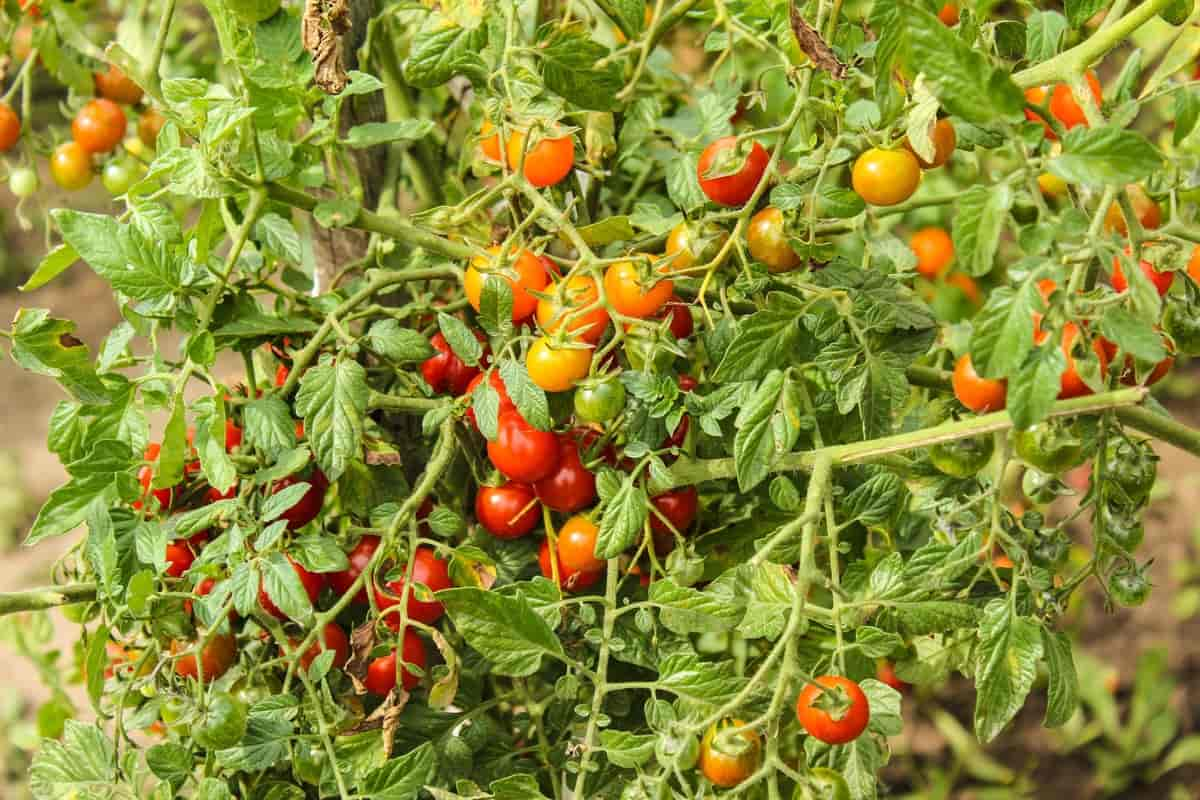
Cultivation Requirements for Desi Varieties
Soil Preparation
- pH Range: 6.0-7.0 for optimal growth
- Soil Type: Well-drained sandy loam or red soil
- Organic Matter: 2-3% for traditional varieties
- Drainage: Essential to prevent root diseases
Planting Guidelines
- Seed Rate: 200–300 grams per hectare
- Spacing: 60cm x 45cm for most varieties
- Transplanting: 25-30 day old seedlings
- Season: Kharif (June-Oct) and Rabi (Nov-Mar)
Water Management
Traditional varieties typically require less irrigation than hybrids due to better drought adaptation. Deep, infrequent watering promotes strong root development.
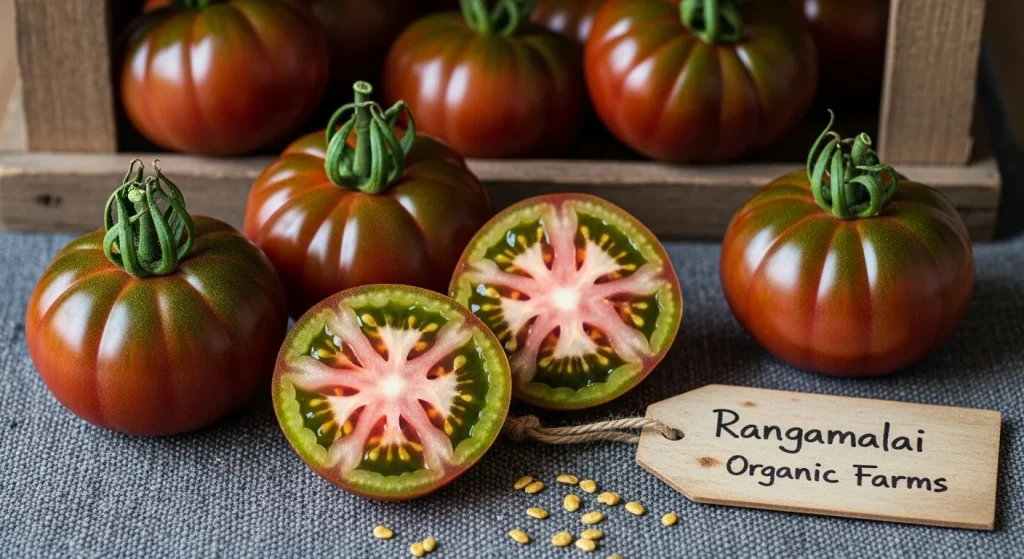
Yield Expectations and Economics
Yield Comparison by Category
| Variety Type | Average Yield (tons/ha) | Market Price Premium |
|---|---|---|
| Traditional Desi | 15-25 | 20-30% higher |
| Pusa Series | 30-35 | 10-15% higher |
| Regional Varieties | 20-30 | 15-25% higher |
Economic Benefits
- Lower Input Costs: 30-40% reduction in seed costs
- Seed Saving: Eliminates annual seed purchase
- Premium Pricing: Higher market value for traditional varieties
- Organic Certification: Easier transition to organic farming
Regional Growing Seasons
Optimal Planting Times
| Region | Main Season | Secondary Season | Peak Varieties |
|---|---|---|---|
| North India | Oct-Mar | Jun-Sep | Pusa Ruby, Pusa Early Dwarf |
| South India | Year-round | Variable | Co 1, Naati varieties |
| West India | Oct-Mar | Limited | Roma, Traditional types |
| East India | Oct-Feb | Jun-Aug | Kashi, Regional varieties |
| Northeast | Mar-Oct | Limited | Doyang, Local types |
Seed Saving and Storage
Traditional Seed Saving Process
- Selection: Choose fully ripe, disease-free fruits
- Extraction: Ferment seeds for 2–3 days
- Cleaning: Wash and dry thoroughly
- Storage: Store in cool, dry conditions
- Viability: Seeds remain viable for 3–4 years
Benefits of Seed Saving
- Cost Reduction: Eliminates annual seed purchase
- Adaptation: Seeds adapt to local conditions over time
- Genetic Diversity: Maintains variety characteristics
- Food Security: Ensures seed availability
Processing and Culinary Applications
Traditional Uses
- Fresh Consumption: Desi varieties excel in salads and raw preparations due to superior flavor profiles.
- Processing: Varieties like Roma and Pusa Ruby are excellent for sauce, paste, and pickle preparation.
- Regional Cuisine: Specific varieties complement regional cooking styles – Naati tomatoes for South Indian rasam, Kashi varieties for Eastern preparations.
Challenges and Solutions
Common Challenges
- Lower Yields: Compared to modern hybrids
- Disease Susceptibility: Some varieties lack specific disease resistance
- Market Awareness: Limited consumer knowledge about varieties
- Seed Availability: Difficulty sourcing pure traditional seeds
Farmer Solutions
- Crop Rotation: Reduces disease pressure naturally
- Organic Practices: Builds soil health and plant immunity
- Local Networks: Develop seed exchange systems
- Value Addition: Focus on processing and direct marketing
Future of Desi Tomato Cultivation
Growing Trends
- Organic Farming: Increasing demand for chemical-free produce
- Agrotourism: Traditional varieties attract urban consumers
- Seed Banks: Community initiatives preserve genetic resources
- Research Support: Government programs promote indigenous varieties
Market Opportunities
- Premium Segments: High-value markets prefer traditional varieties
- Export Potential: International demand for heirloom types
- Processing Industry: Traditional varieties offer unique flavor profiles
- Seed Production: Commercial seed multiplication opportunities
Conclusion
Desi tomato varieties represent India’s agricultural heritage while offering practical advantages for modern farmers.
These traditional cultivars provide excellent taste, natural disease resistance, and economic benefits through seed saving and premium market positioning.
Success with desi varieties requires understanding their specific requirements, proper timing, and appropriate marketing strategies.
Farmers choosing traditional varieties gain access to sustainable cultivation methods while preserving India’s genetic diversity for future generations.
The combination of cultural significance, superior taste, and growing market demand makes desi tomato varieties an excellent choice for farmers seeking both profitability and sustainability in their agricultural practices.

